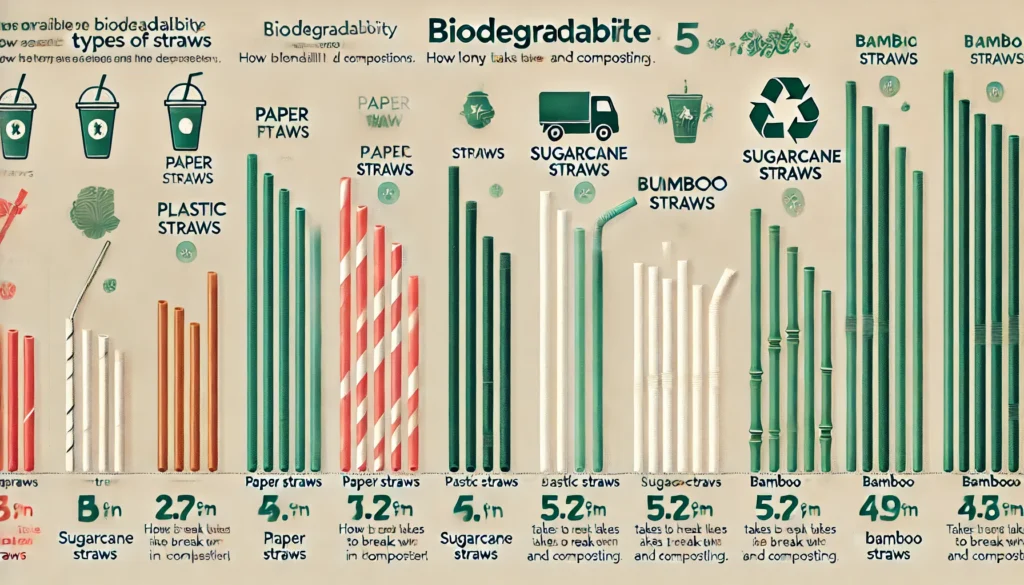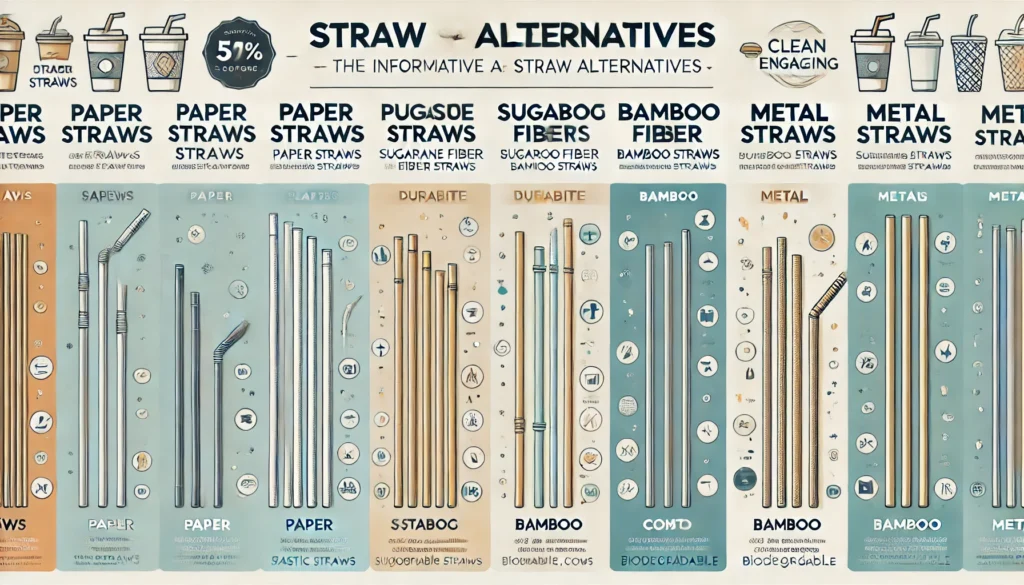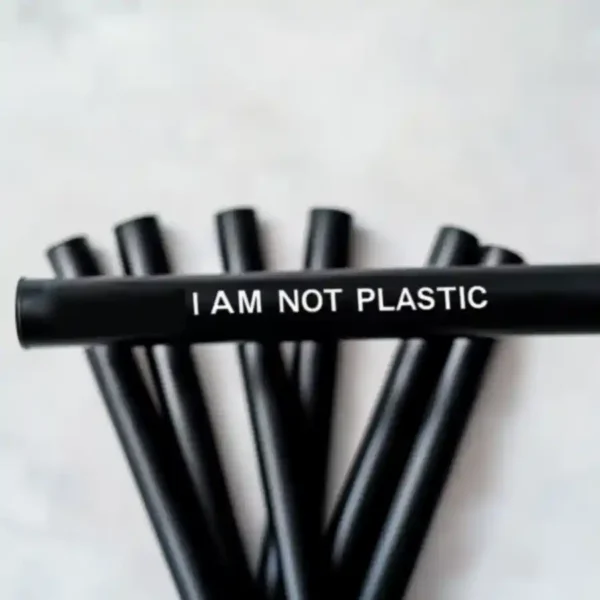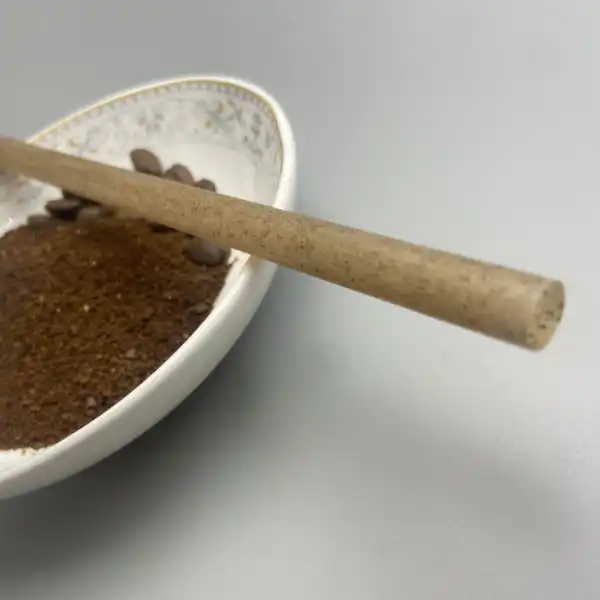Are paper straws truly the best alternative to plastic? This article uncovers the hidden environmental and practical drawbacks of paper straws and explores better, more sustainable alternatives.

導入
The global push to eliminate plastic waste has led to widespread adoption of paper straws as an “eco-friendly” alternative. Governments and businesses, including major brands like Starbucks and McDonald’s, have embraced paper straws in response to public demand for sustainable options.
However, are paper straws truly the best choice? Despite their biodegradable reputation, they come with hidden environmental costs, recyclability issues, and usability concerns. In this article, we take a data-driven approach to examine the true impact of paper straws and explore superior alternatives that offer both environmental and practical benefits。
1. The Push for Paper Straws: Are They a Sustainable Solution?
The global movement to ban plastic straws stems from concerns about marine pollution and the overwhelming presence of plastic waste in the environment. As a result, paper straws have gained widespread popularity as a biodegradable alternative。
Companies have adopted paper straws as a marketing tool, aligning themselves with sustainability initiatives. However, this shift often ignores the larger picture—paper straws present challenges that undermine their perceived environmental benefits.
2. The Environmental Issues with Paper Straws
2.1 The Carbon Footprint of Paper Straws
Producing paper straws is far from carbon-neutral. The process requires:


A study by the Journal of Industrial Ecology found that paper straw production generates up to 3x more carbon emissions than plastic straws per unit weight [¹].
2.2 Are Paper Straws Actually Biodegradable?
One of the biggest misconceptions about paper straws is that they biodegrade quickly. While this is true under ideal conditions, the reality is:

A report by the EPA on Waste Management (2022) showed that less than 10% of paper-based food packaging is properly composted [²].
2.3 Recycling Issues: Paper Straws Are NOT Easily Recyclable
Although paper is generally recyclable, paper straws are not due to:
- Contamination from liquids, making them unsuitable for standard recycling facilities.
- Added chemicals and coatings, which disrupt the paper recycling process.
Most paper straws end up in landfills, counteracting their intended sustainability benefits.

3. The Practical Problems with Paper Straws
3.1 User Experience: Soggy, Weak, and Unpleasant
Paper straws absorb liquid and lose structural integrity within minutes, making them impractical for cold beverages and entirely unusable for hot drinks.
3.2 Health Concerns: PFAS (Forever Chemicals) in Paper Straws
Many paper straws contain per- and polyfluoroalkyl substances (PFAS)—a group of chemicals used for waterproofing. According to a 2023 study in Environmental Science & Technology、 the majority of paper straws tested contained PFAS, which are linked to hormone disruption, liver disease, and cancer [³].
3.3 Are Paper Straws Cost-Effective for Businesses?
- Higher costs: Paper straws are 2–4 times more expensive than plastic straws.
- Customer dissatisfaction: Many businesses report negative customer feedback due to the poor usability of paper straws.
4. The Better Alternatives to Paper Straws
4.1 Sugarcane Fiber Straws: The True Eco-Friendly Alternative



4.2 Bamboo Straws: A Reusable Option


4.3 Edible Straws: Rice, Pasta, and More



4.4 Stainless Steel, Glass, and Silicone Straws


5. How to Choose the Right Sustainable Straw for Your Needs
For Businesses
- Consider factors like cost, durability, and customer satisfaction。
- Best for bulk use: Sugarcane fiber and bamboo straws.
- Best for premium brands: Reusable stainless steel, glass, or silicone straws.
For Consumers
- If convenience is key: Compostable sugarcane straws。
- If long-term sustainability matters: Invest in reusable metal or silicone straws。
6. Conclusion: Making an Informed Choice
Paper straws, while marketed as a sustainable solution, come with environmental, health, and usability concerns that make them an ineffective alternative to plastic. Consumers and businesses should explore better options like sugarcane fiber straws, bamboo straws, and reusable alternatives。
Sustainability is not just about eliminating plastic—it’s about choosing the right materials for long-term environmental and practical benefits.

FAQ Section (8 Questions & Answers)

Not entirely. Their carbon footprint, PFAS contamination, and recycling difficulties undermine their benefits.

Yes, many contain PFAS (forever chemicals), which are linked to health risks [³].

Paper absorbs liquid and softens within minutes, making them impractical for beverages.

Sugarcane fiber straws, bamboo straws, and reusable metal/glass straws are the most sustainable options.

No, contamination from beverages makes them non-recyclable in most facilities [²].

In composting conditions, weeks to months—but in landfills, they can take years [²].

Many businesses adopt paper straws for marketing and regulatory compliance, despite usability complaints.

Educate them on better alternatives like sugarcane and bamboo straws. Many businesses are unaware of these options.
Citations
[1] Journal of Industrial Ecology, 2021
[2] EPA Report on Waste Management, 2022
[3] Environmental Science & Technology Journal, 2023
This comprehensive, research-backed guide helps businesses and consumers make better, truly sustainable choices—beyond the misleading claims of paper straws.








